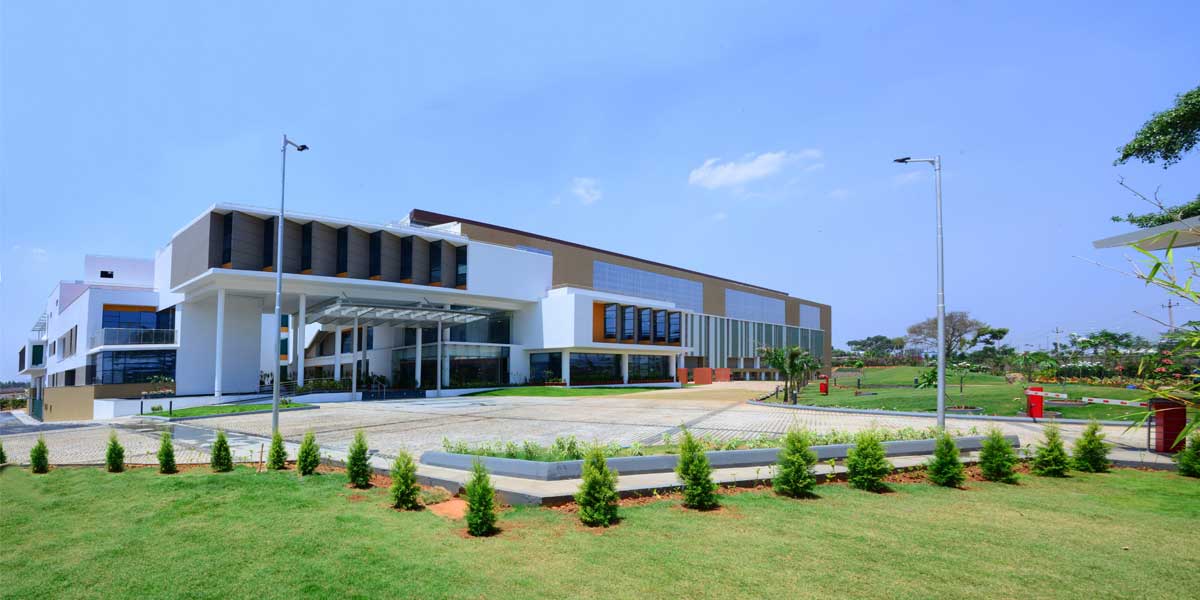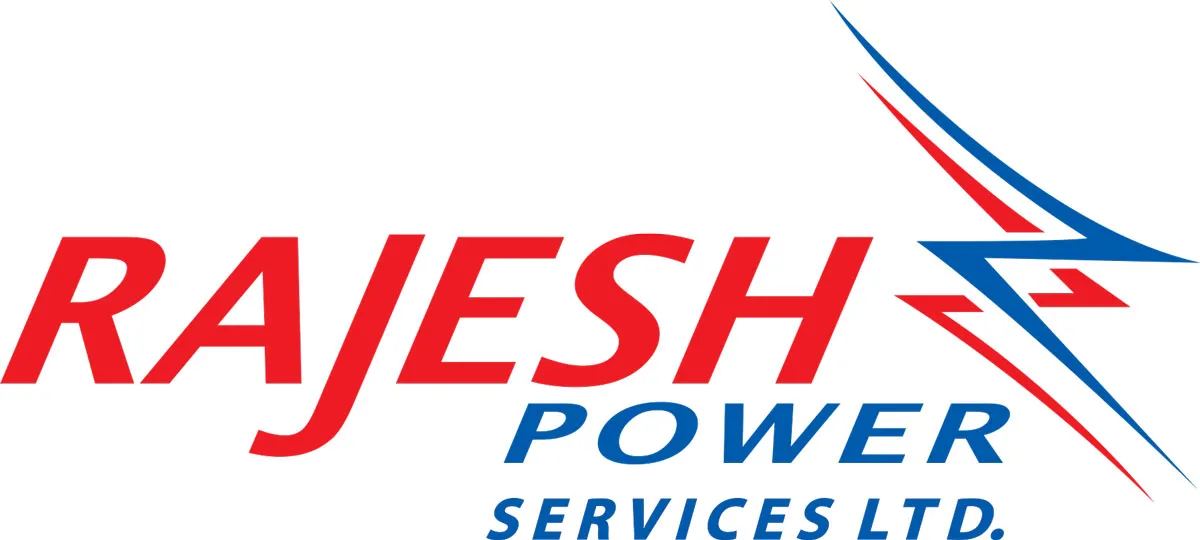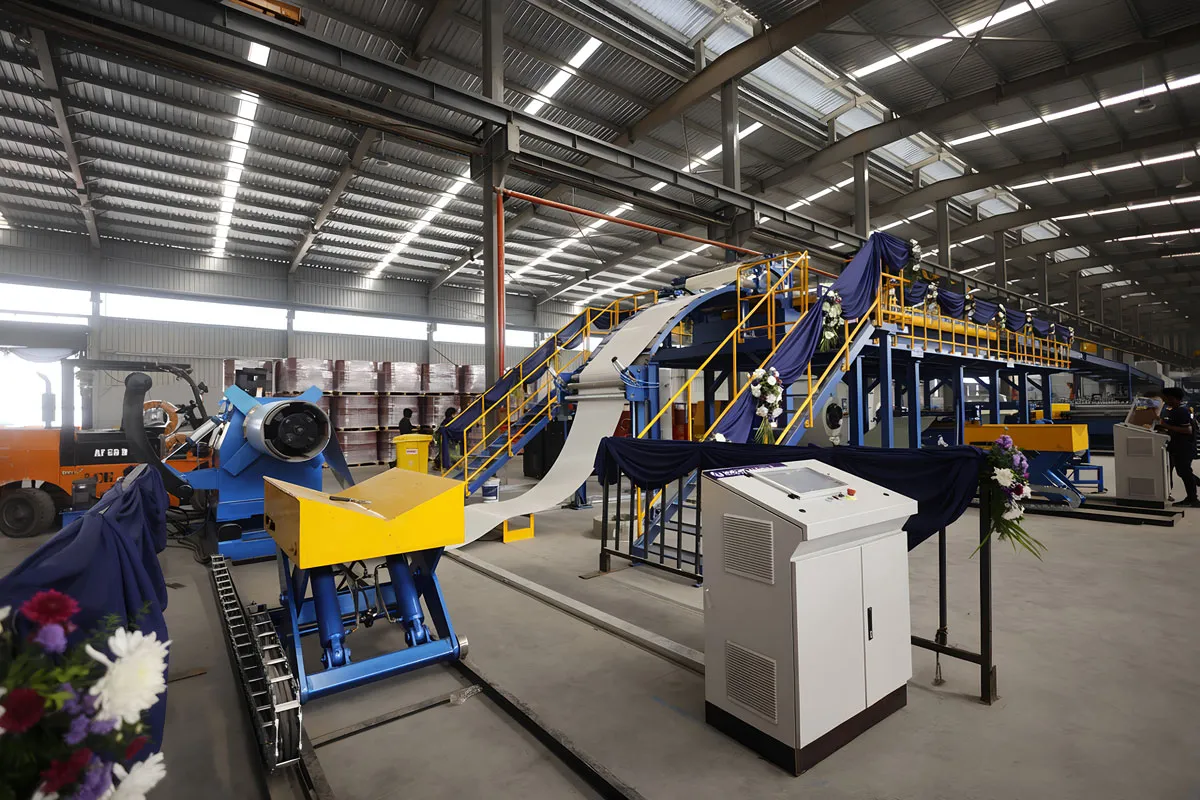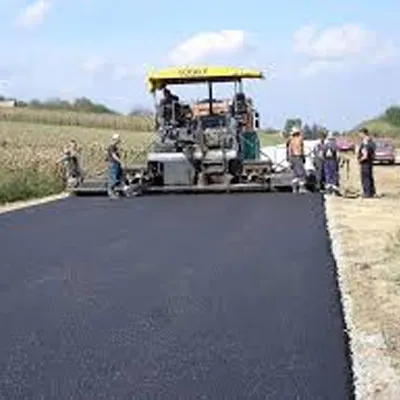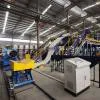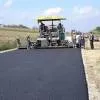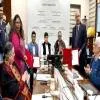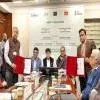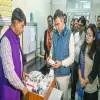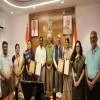Industrial waste heat is the energy that is generated in processes which is not put into any
practical use and is lost, wasted and dumped into the environment. Recovering the waste heat
(WHR) can be conducted through various waste heat recovery technologies to provide valuable
energy sources. An interview with Triveni Turbine's Arun Mote.__________ Q1. Provide us a brief introduction of your company and its products and services.
A1. Triveni Turbine Ltd. is the largest manufacturer of industrial steam turbines in terms of unit
volume in the sub 30 MW range globally. With more than 1 billion operating hours of turbine
fleet, the company has installed over 4,000 steam turbines (total 13 GW power generation
capacities) across 20 industries. Triveni is present in over 70 countries around the world. Triveni
manufactures turbines at its world-class manufacturing facilities located in Bengaluru, India.
Triveni Turbines offers steam turbine solutions for Industrial Captive and Renewable Power. Our
steam turbines are used in diverse industries, ranging from steel, cement, sugar, textiles,
chemical, pulp and paper, petrochemicals, fertilisers, solvent extraction, metals, palm oil to food
processing, oil and gas, waste to energy (WtE). Many of the leading cement companies use the
steam turbines made by Triveni for recovery of the waste heat.
The company’s product portfolio comprises a large range of back-pressure and condensing
steam turbines that are easily customized to suit sector-specific and customer-specific needs.
Equipped with a choice of impulse and reaction technology, these turbines can work across a
wide range of pressure and flow applications.
The Aftermarket business of the Company, Triveni REFURB, works globally across all brands of
rotating equipment leaving a positive footprint on repair, spares, overhauling, efficiency
improvements etc upto 300MW including the C-WHR sector.
Q2. Tell us about the progress being made on renewable energy in our country. Where
do we stand in comparison to developed economics and what is our goal?
A2. In India, existence of renewable energy began in the early 2000s. With the initiative from the
Central and State Governments and implementation of Indian Electricity Act of 2002, certain
drive and incentives were given to renewable energy segment like biomass IPP’s, Wind Energy,
Solar Energy, WtE, and bagasse based sugar cogeneration.
Renewable energy capacity addition in India for FY20 stands at 9.4 GW, out of which solar
power alone contributes 6.4 GW. Wind energy is the second major contributor. Solar and wind
energy constitute the utility power generation and are Independent Power Producers ( IPP ) that
generates the power to utilities and large users while the non-IPP’s are generating the power for
the industrial consumption. Waste heat recovery power plants in the sectors like Sponge Iron,
Steel and Cement came into existence from the year 2000 onwards in the Indian market. Earlier
in India, cement giants installed cement WHR plants made in China. Over the last decade,
Indian boiler and turbine OEM’s offered the products that were indigenously designed and
manufactured catering to the ever-changing market demand along with providing sustained
long-term aftermarket services. These plants are able to deliver the design outputs consistently.
India is one of the countries with a strong presence of cement WHR power plants. Countries
with developed economies like USA, Europe and Japan that have surplus power have not
invested in the cement WHR technology.
Q3.Size wise which is the largest Waste Heat Recovery (WHR) project you had executed?
What were the challenges?
A3. Cement WHR depends on cement kiln capacity, heat utilization and plant efficiency.
Accordingly, potential WHR power generation varies from 4-25 MW. More than 20 MW power
generation is quite uncommon.
Triveni provided 22.5MW steam turbine to Prism Johnson Cement WHR plant through the EPC
company - ThyssenKrupp Industries. This 22.5 MW steam turbine is an Injection condensing
turbine which receives Medium Pressure (MP) steam as inlet and Low Pressure (LP) steam as
injection in mid steam path. Steam is collected from 4 No’s of Preheater (PH) boilers and 2 No’s
After Quenching Cooler (AQC) Boilers from the two cement kilns of 7000 TPD and 8000 TPD
capacity.
It was challenging to take up this project as the steam flow was across multiple sources (i.e.
multiple boilers). Steam generation depends on the waste heat generated from hot gas
temperature from preheating process and AQC. Due to this there is variation in steam inlet at
MP and LP side and load variation in load or power output.
However, commissioning of the turbine was successfully completed despite the challenges that
we faced with the quick turbine delivery of 8 months. This sets a benchmark for Triveni in the
Cement industry.
Prism Johnson Cement does not have Captive power plant installed and this WHR plant has
offered many benefits to them.
On the other hand, Triveni REFURB, is working on providing solution to customers having
existing “Turbines without Injection”. These Turbines are re-engineered to allow the additional
steam to be injected into the Turbine and improve the efficiency of the plant.
Q4.Throw light on three waste heat power recovery systems. Which has been popular in among
cement plants?
A4.Globally there are three processes by which WHR plants are installed in a Cement Industry.
- Steam Rankine Cycle System (SRC)
- Organic Rankine Cycle System (ORC)
- Kalina Based System
In India, Steam Rankine Cycle (SRC) is widely used for WHR power generation across cement
plants.
In SRC, exhaust gases from rotary kiln pass through preheaters (PH) to the preheater boiler.
Similarly mid tapping from AQC induces hot gases to AQC boiler. One line of cement kiln can
give waste heat for 2 PH boiler and 1 AQC boiler for steam generation. These boilers, based on
heat source, generate medium pressure (MP) steam of 11 Ata-18 Ata at temperature 300-465
Deg C and low pressure (LP) steam of 2 Ata - 3.5 Ata pressure at temperature 180-205 Deg C.
Injection condensing turbines are widely used for such applications. These turbines use the
Medium Pressure (MP) steam as inlet to turbine and inject the LP steam to the LP side of
turbine, later this combined steam is expanded at LP/exhaust side to 0.1 Ata or 0.2 Ata based
on water cooled condenser or air cooled condenser options.
Generating steam from hot gases is a significant technology in the cement industry. Leading
Indian boiler OEM’s have developed expertise in steam generation under various conditions.
Similarly, the Injection condensing turbine developed by Triveni for different MP and LP steam
combinations are successfully working across the Indian cement sector. These indigenized
steam turbines and boilers helps in eliminating the dependency on Chinese boilers and Chinese
turbines which were earlier being used in WHR plants till the year 2012-14.
Dependency on Chinese turbines has now declined in the Indian market as the Indian OEM’s
adapted to Injection condensing turbines technology with a dominant leadership. As per recent
industry estimates, close to 50-60% of cement plants in India have installed WHR based power
plants so far and the rest are in the process of setting up the plants in the next 3 to 4 years’ time
period.
Large cement companies are mostly considering WHR power plants for their Greenfield
projects.
Below table demonstrates the technical parameters benchmarked for available heat per ton of
clinker in cement plants that are considered for WHR power generation.
WHR FLOW
DIAGRAMTriveni has a strong reference of Injection condensing turbines supplied to cement WHR plants
across India. Specific design consideration is important in injection and admission zone. The
rotor designed by Triveni has the higher stability to offset the excitation due to fluctuating
injection steam loads. Turbine mid-section and low pressure section is subjected to cyclic
fatigue loads induced by thermal cycle and flow variations. To address this issue design and
engineering teams carry out CFD analysis and creep fatigue analysis. This design philosophy is
a feather in the cap for Triveni for its robust and efficient cement WHR solution.Typical
Admission/Injection cross section of a Triveni TurbineThermo-Structural
Transient Analysis: Turbine Steam Path
Q5. Which are the sections of Cement Plants from where you recover the heat and which
are the sections where there is potential but one cannot recover the heat?
A5. As mentioned, Preheaters which collects hot gases from cement kiln and AQC (After
Quenching Chambers/Coolers) are the primary source of heat. Hot gases from these when
passed through steam generators/boilers produces medium pressure steam of 11 Ata,300 Deg
C to 18 Ata,465 Deg C and LP steam(injection steam) at 2 -3.5 Ata and 180-205 Deg C.
Presently these are sources of heat in cement plants. Heat from the raw mill section or exhaust
gases from boilers are unutilized as the heat is of low quality and cannot be used in present
form.
To increase the power output in new plants, fire heaters are used where the temperature of hot
gases are increased by burning pet coke or low-grade coal. Gas temperature and finally MP
steam temperature is increased to 465 -470 deg C. one of the leading cement manufacturer has
used this concept in their new cement plants.
Q6. Typically what is payback period of the WHR project? Has it changed over period of
time?
A6. Capex investment for WHR projects is Rs.10 Crore per MW power generation. But its Opex
cost is very low. No main fuel cost or supplementary fuel is required. Due to the availability of
free heat in the form of waste gases from cement manufacturing process, power generation cost
is significantly low as compared to CPP power generation or grid power cost. WHR power
plants are installed in existing cement plant and new cement plant. The land and other
infrastructure are readily available at these sites. There is continuous focus to reduce Capex
cost.
In the Aftermarket segment, the re-engineered/efficiency enhanced Turbine offers a payback of
2 years as there will be no modifications on the civil foundation and the existing balance of plant
will mostly remain the same.
Q7.What are the offerings of Triveni Turbines for C- WHR power plants.
A7.Triveni has developed efficient Injection condensing turbines which take medium pressure
steam as turbine inlet and LP steam as injection steam after certain stages. With addition of 7
generation turbine blades developed by Triveni, power generation output is more for input
steam parameters or gas parameters.
Salient features of Triveni’s steam turbines in the cement Industry are as follows:Integral Lube Oil tank - Triveni offers Integral Lube Oil tank for Power House
Layout and civil cost optimizations of TG House. Benefit - Reduction in civil cost of the project.MRT – Live steam mechanical run test at Triveni’s manufacturing facility for the
steam turbines. Turbine is tested with live steam from boilers at Bengaluru works
with job mounted turbo supervisory systems, Woodward governor and gear box.In-house Manufacturing- Turbine components like blades, rotor, and casing are
manufactured and assembled at Triveni’s facility.Vacuum Tunnel – High speed balancing of turbine rotor on “Schenk” Vaccum
TunnelTriveni Gear Box- Gear Box (Triveni Power Transmission) assembly is done along
with the turbine on the same base plate and converts into a single product. Separate
foundation of gear box is not required.
Q8.What is Triveni Turbines contribution to Cement WHR? How it sees road ahead.
A8.Triveni is associated with C-WHR since many years and executed numerous prestigious
projects with the leading cement manufacturers.
Following is list of some of key projects successfully executed by Triveni
Turbines in C-WHR sector:
Ultratech Cement – 70MW
Dalmia Cement – 40 MW
Nuvoco Vistas – 20MW
Penna Cement – 30MW
Prism Johnson Cement – 23MW
We are currently working on multiple projects which are in the enquiry and -finalisation stage.
Way forward to cement WHR is the implementation of such projects over the coming years.
Q9.Can WHR energy be treated as renewable energy? What has been approach in our
country?
A9.Technically Cement WHR (C WHR) can be treated as renewable energy as the fossil fuels
like coal, pet coke are not used. Here combustion of natural resources do not take place. It
helps in preserving earth’s diminishing natural resources like coal. It also helps in reducing
carbon emission. But in India it is seen as an Industrial consumption or in-house consumption
and not for utility. Hence incentives, policy guidelines or the drive from the governments does
not exist. Cement sectors have opted the WHR technology and are saving precious resources
as coal.
Q10.Do you think bringing WHR under renewable gets more traction? What is the
situation in other countries?
A10. Presently 50-60% of cement manufacturing plants have already implemented WHR
technology in their cement plants. Big cement manufacturers in India have already installed
CWHR in their plants and planning to install in the other plants also. However a few other
manufacturers, having one or two manufacturing plants and limited geographical presence are
not opting for WHR due to the need for major Capex Investment and financial constraints. If C-
WHR is treated as renewable energy source and incentives are offered it will get more traction
for WHR power plants.
This will reduce load on the grid power and also helps in saving coal reserves for future
generation. The industry associations and sector specific associations can play role in bringing
Central Government and State Government ministry’s or Electricity regulators on a single
platform. This forum can decide the long and short term policies to promote and implement C-
WHR in all plants in India. China is much ahead of us in C-WHR and had over 80% of plants
installed C-WHR. Europe, USA and Latin America are planning to implement C-WHR in their
cement plants and some International tenders are already under discussions and advance
stage of finalization.
A greater push is required for C-WHR in the Indian context and in the upcoming years, Triveni
will play a significant role in installing C-WHR 100% across the cement manufacturing plants in
India.About Arun Mote: Arun graduated from I I T Bombay further with a Master’s degree in
Mechanical Engineering. Obtained his MBA from Jamnalal Bajaj Institute of Management
Studies, Bombay University. Joined Larsen & Toubro Limited as a Management Trainee looking
after Caterpillar product line. Subsequently, he changed over to SKF Bearings Limited and was
looking after automation and electrical segments. Subsequent he worked with a Central Air
Conditioning Company of Blue Star Limited. For last 20 years he is with Triveni Turbine looking
after turbine business. Under his leadership, the turbine business has turned around and has
grown many times and established leadership in Industrial Turbines in domestic and also in
overseas market.
